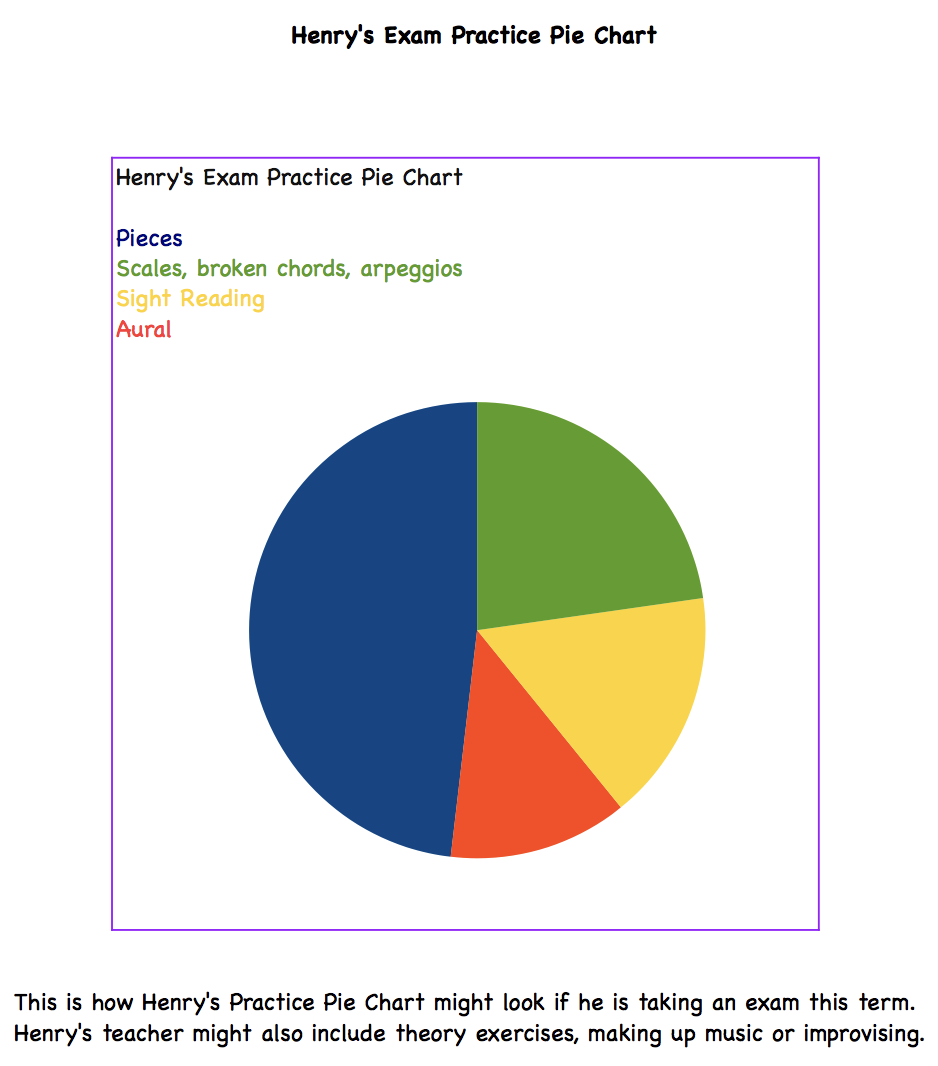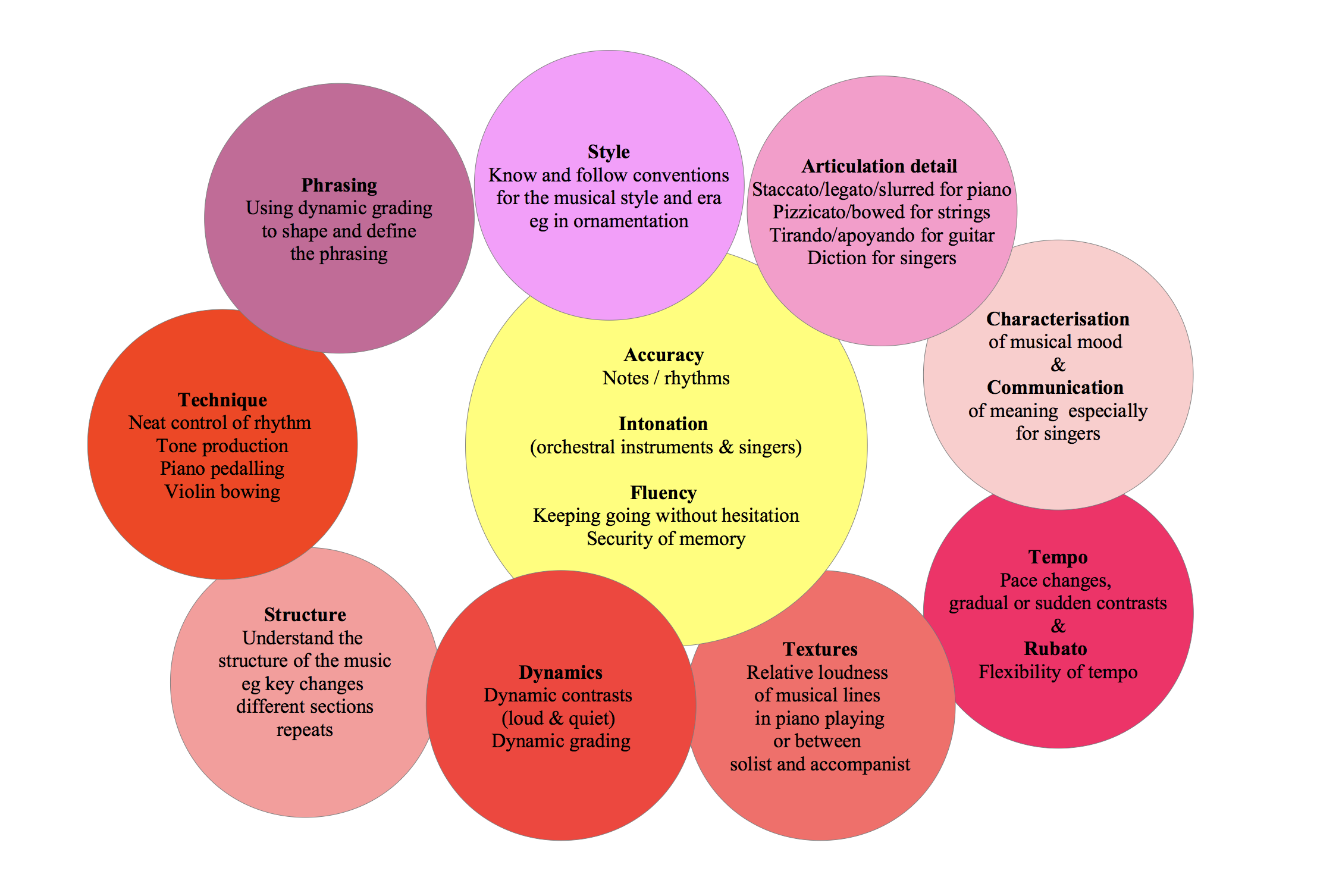Good Practice Techniques for Graded Examinations – Part I

Good practice techniques are essential for all sections of the examination and involve mindful concentration and clear objectives. A practice plan that aims for maximum success needs to address the following:
- WHAT to practise What skills need to be practised, and in what proportion?
- WHY we practise Formulating practice objectives.
- HOW to practise Practice techniques that enable us to fulfil our objectives.
- WHEN to practise Changing the focus of practice as the examination approaches.
What to practise
When the decision has been made to enter an examination, practice will focus mainly on the elements to be assessed. A sensible balance for practice might be to devote roughly the same amount of time to each skill as the weighting each one attracts in the mark scheme. Figure 1 shows the suggested balance between pieces and the supporting tests for Henry, who is preparing to take an ABRSM examination.

Although the pieces carry the most marks and are the main focus for pre-examination preparation, the supporting tests should be practised too for maximum chance of success. It is easy to practise aural and sight reading at home now that students have online technology to help them.
Why we practise
Clear objectives need to be formulated that represent what needs to be learned, then practised and refined prior to the examination. We initially begin practising to learn a piece or song accurately, working on small sections at a time. Hearing the music before starting to learn it shows students the end result they are working towards and having access to a reliable recording, such as this video of Survivor played by Jessica O’Leary, keeps them on track during subsequent weeks.
Accuracy alone is insufficient for achieving a high mark and the reason we continue practising once we know a piece or a song is to focus ever more sharply on appropriate musical detail and stylish interpretation, while remaining in technical control of the sound and fluency. Knowing a piece involves internalising a series of ‘signposts’ in the music such as where one section ends and another begins or where the key changes. These transitions invariably involve changes of mood, dynamic or pace, none of which should be neglected in practice.
No matter which instrument (or voice) the candidate is offering, practice should, at all times, have a musical objective and teachers may need to remind their students of this. It’s rewarding, and also more beneficial, to practise musically even if we are primarily addressing a memory issue or a technical problem.
Figure 2 shows the elements that contribute to a good interpretation of a piece or song; the inner circle shows the most basic aspects and the outer rings represent the finer points of performing well.

The next article in the series will explore how to practise mindfully to fulfil our learning objectives.





